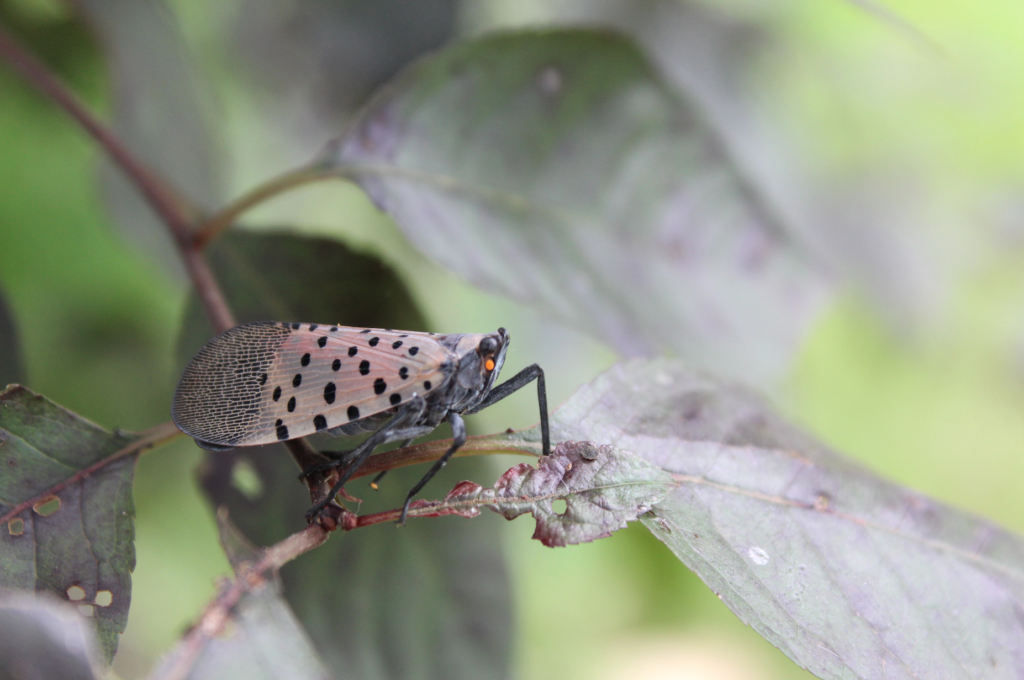
Spotted lanternfly sitting on a purple sandcherry. Photo Credit: Unsplash/ Magi Kern
By Iryna Shkurhan | ishkurhan@queensledger.com
The invasive spotted lanternfly is back for the season.
In past years the species emerged from their egg masses in May, but this year the State’s Department of Agriculture received reports of sightings in the city in the middle of April. Officials followed up on sighting reports across all boroughs and confirmed their presence in person.
According to iNaturalist, a website where naturalists can record their observations, there have been several sightings of lanternflies — in Flushing Meadows Corona Park and Queensbridge Park — this past April.
Despite efforts to eradicate them with a public campaign that encouraged residents to kill them on sight, experts anticipate that their population will only continue to grow this year. Lanternflies have been seen at high rates across the boroughs and wider state, but most noticeably in Staten Island where they were first spotted in the state in July 2020.
“The public in their ability to recognize spotted lanternfly, and in their willingness to report it to us, has really been crucial in our ability to keep track of where this is,” said Chris Logue, Markets Director for the Plant Industry at the New York State Department of Agriculture in a Zoom address to media on April 26.
In a destructive nature, the species feeds on over 70 species of plants, including crops that are critical to New York’s agricultural economy, such as grapevine, apple trees and hops. New York State is ranked third place for grape production in the country and second in apple production, according to USDA Statistics.
“There’s still a lot that we don’t know about spotted lanternfly,” said Logue. “We don’t want to be caught by surprise in the future if it begins to cause issues on other crops, or natural resources that are important to us.”
Vacuuming the insects into a plastic bag has proved to be the most successful method of reducing the population size so far, according to officials.
“That has worked really well for us,” said Logue, who mentioned that lanternflies die naturally if they do not feed on something for several hours.
The state is encouraging homeowners to use cordless vacuums to suck up the pests if they have the desire to take action in their own backyard. At this time, they are not recommending a specific pesticide for use on private property. But officials encouraged residents to inquire with their local Cornell Cooperative to get a list of pesticides that are safe to use.
Lanternflies tend to follow both commerce and recreational trade routes. In an effort to slow the spread, the state is inspecting shipments of goods for both egg masses and later stage flies.
“They tend to be very good hitchhikers,” said Logue. “And they can move around in really all of their life stages, which is a challenge.”
If you see a spotted lantern fly, you can report it via an online reporting tool found at NYS Department of Environmental Conservation or email the location and images of the insect, egg masses or infestation signs to spottedlanternfly@agriculture.ny.gov.
The state is encouraging reporting of any sighting, even if you are unsure that it is a spotted lanternfly. They also recommend featuring an object for scale, such as a coin or ruler, in submitted images.




